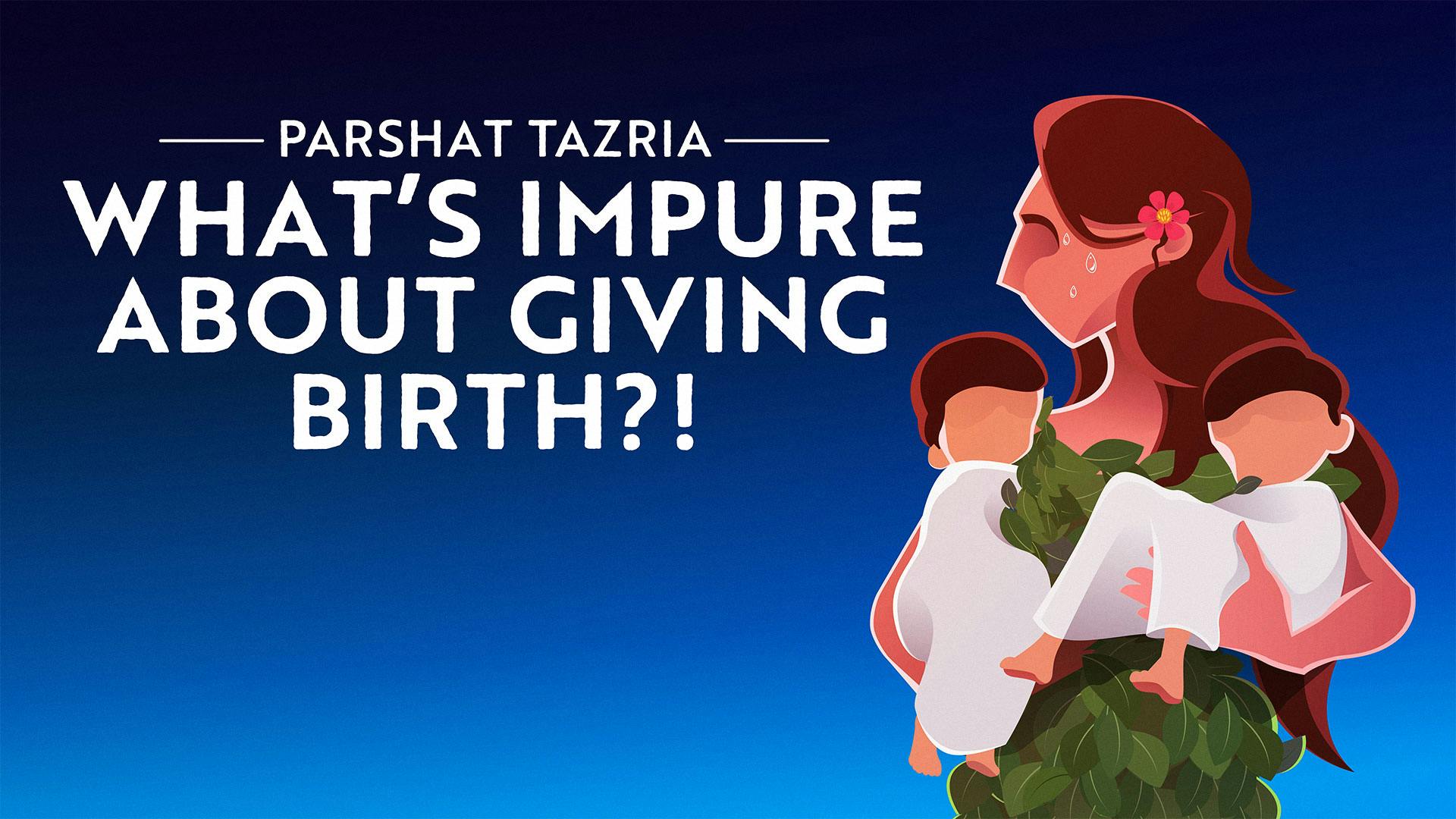Tazria is the weekly Torah portion read on May 3, 2025
Parshat Tazria: Dvar Torah, Summary, Meaning & Torah Portion
Tazria Torah Portion: Leviticus 12:1–13:59
In this parsha, we learn about the post-childbirth purification process. We learn about the laws of Tzara'at (loosely translated to leprosy).
The Bible's Strange Laws Of Impurity After Childbirth
Tazria Torah Portion & Commentary
Tazria Dvar Torah & Meaning
Parshat Tazria Summary
Tazria Torah Portion: Leviticus 12:1–13:59
Parshat Tazria, like a great deal of the Book of Leviticus, discusses the topic of taharah and tumah. These terms are difficult to translate (and possibly even more difficult to relate to in the 21st century): do they correspond to cleanliness and uncleanliness? That translation doesn't seem right. Ritual purity and impurity? That may be closer — but what does it mean? Why do some things – childbirth, certain rashes of the skin, contact with certain animals, corpses – render a person "ritually impure"? And what, if any, is the implication for us today? The classic implication of ritual impurity is that a person cannot do any rites associated with the Temple, enter the Temple grounds to bring a sacrifice, etc. — but we have no Temple today, no sacrifices, so should it affect our lives at all? For an exploration of these questions and more, we recommend Imu and David's Parsha Experiment segment, "What Do Tumah and Tahara Mean Today?"
Now, Parshat Tazria opens with the specific case of a woman who has just given birth. She must wait out her period of ritual impurity (the length of time depends on whether the baby was a boy or a girl) and then immerse in a mikvah (ritual bath) and bring offerings to God. In the course of these laws, we are also reminded of the law to circumcise a boy when he is eight days old.
But following those opening eight verses, we find that the whole rest of Parshat Tazria — and much of the next parsha, Parshat Metzora — focuses on another case of tumah, spiritual impurity: the laws of a strange malady called tzara'at. Some translations render tzara’at as “leprosy” – but Rabbi Shimson Raphael Hirsch (in his comment on Leviticus 13:59) makes a very compelling case that biologically this isn’t leprosy.
Tzara'at does present with a physical manifestation, seemingly turning the skin a whitish color — but in other ways, it seems like a spiritual malady. (At this point, you may be wondering: what does childbirth have to do with the leprosy-like condition of tzara'at? Why does the Torah place them together in a single parsha? That is the question which Rabbi Forhman and Imu tackle in their thought-provoking Parsha Lab podcast on Tazria-Metzora.) Back to tzara'at: the Sages suggest that it is caused by one of a range of spiritual crimes — gossip, haughtiness (see Tosefta Negaim 6:7, for example) — but the Torah is seemingly silent on this question. Instead, the text of Parshat Tazria focuses on how to diagnose tzara'at based on its symptoms, and there are a range of questions that the diagnosing person (the kohen, or priest) must consider: Is the lesion discolored, whitish? Is there raw-looking skin within it? Has the rash spread all over the person's body or is it relatively localized? Did the person with tzara'at recently experience inflammation of the skin? What about a burn? Is there a hair sticking out of the rash? Did you know that tzara'at can afflict not just a person but also a garment?
These verses are as detailed as they are graphic. But how are we meant to make sense of them? We've never encountered anyone with tzara'at before. Rabbi Fohrman has a fascinating explanation of what the ailment of tzara'at is all about, and he gets there by reading the verses (in next week's parsha, Parshat Metzora) that describe the purification process for a person afflicted with tzara'at. He suggests that with the laws of tzara'at, the Torah means to convey to us unexpected and profound insights about how we live in a community with one another — and that these lessons apply today as much as they ever did. For more, visit our Parshat Metzora page or visit Rabbi Fohrman's video directly here.
Check out the full text of the Parsha here.
Interested in learning more about the upcoming Parshiot? Check out Aleph Beta’s Parsha pages on Parshat Metzora, Parshat Acharei Mot, and Parshat Kedoshim!
